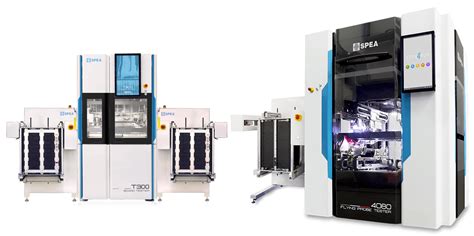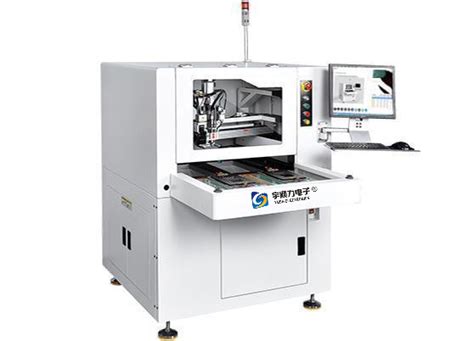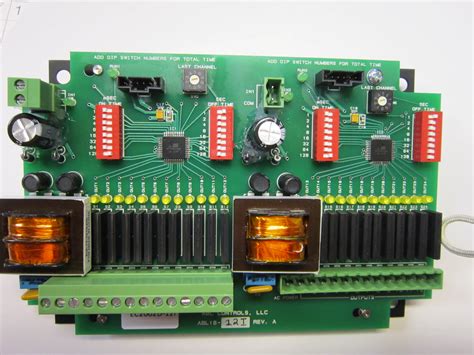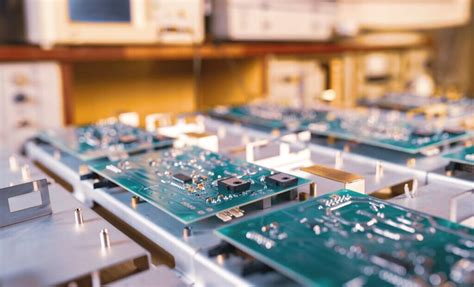PCB Digital Integration: Optimizing Workflow Efficiency in Engineering

Key Takeaways
Adopting PCB digital integration reshapes how engineering teams approach design, collaboration, and production By leveraging automation tools and cloud-based platforms, you eliminate manual redundancies while improving accuracy in PCB manufacturing For PCB manufacturing companies, this translates to faster prototyping cycles and reduced PCB manufacturing cost, directly impacting profit margins
Consider how AI-driven simulations optimize component placement and routing, minimizing errors before physical production begins This precision reduces material waste—a critical factor for sustainable growth in the PCB manufacturing business Collaborative frameworks further bridge gaps between design and manufacturing teams, ensuring real-time feedback loops that prevent costly mid-production revisions
| Traditional Workflow | Digitally Integrated Workflow |
|---|---|
| Manual design iterations | AI-aided optimization algorithms |
| Siloed communication | Unified cloud platforms |
| High prototyping costs | Virtual testing environments |
| Reactive error detection | Predictive analytics |
Transitioning to digital workflows doesn’t just streamline operations—it redefines cross-functional roles For example, PCB manufacturing cost reductions stem from automated bill-of-materials (BOM) validation and supplier integration, which cut procurement delays Meanwhile, real-time collaboration tools enable engineers and manufacturers to align on tolerances and material specifications early, avoiding post-production conflicts
By prioritizing data-driven decision-making, you unlock scalability in PCB manufacturing, whether refining high-density interconnect (HDI) designs or managing multi-layered projects The result? A leaner, more agile workflow that adapts to evolving industry demands while maintaining competitive margins

PCB Digital Automation in Circuit Design
Adopting PCB digital automation transforms how you approach circuit design by eliminating manual bottlenecks and accelerating prototyping cycles Modern tools like AI-driven schematic capture and automated layout optimization enable engineers to reduce human error while compressing development timelines by up to 40% For PCB manufacturing companies, this shift means faster transitions from design to production, directly lowering PCB manufacturing cost through reduced rework and material waste
By integrating rule-based design checks and real-time signal integrity analysis, you ensure compliance with manufacturing tolerances early in the design phase This proactive alignment with PCB manufacturing standards minimizes late-stage revisions—a critical advantage when coordinating with global supply chains For instance, automated DFM (Design for Manufacturing) validations flag potential issues like inadequate trace spacing or drill misalignments, preventing costly fabrication delays
Collaboration between design teams and PCB manufacturing business partners is streamlined through cloud-based platforms, where iterative feedback loops resolve conflicts before tooling begins Tools like version-controlled design repositories and automated BOM generation synchronize component sourcing data, ensuring cost-effective material procurement This interoperability is particularly vital for high-mix, low-volume production runs, where PCB manufacturing cost sensitivity demands precision in both design and execution
Advanced automation also empowers you to explore complex architectures—such as HDI (High-Density Interconnect) layouts—with confidence Features like automatic via stitching and thermal simulation optimize designs for performance and manufacturability, reducing reliance on post-production fixes For PCB manufacturing companies specializing in cutting-edge applications, these capabilities translate to shorter time-to-market and higher client retention
Ultimately, the strategic adoption of digital automation tools redefines efficiency benchmarks, allowing your team to focus on innovation rather than repetitive tasks By aligning design workflows with PCB manufacturing realities, you create a cohesive ecosystem where precision and productivity coexist
Collaborative Frameworks for PCB Development
When optimizing PCB manufacturing workflows, collaborative frameworks break down silos between design, engineering, and production teams By integrating digital platforms that enable real-time data sharing, cross-functional alignment becomes achievable even in complex projects For instance, PCB manufacturing companies now leverage cloud-based tools to synchronize design iterations with fabrication requirements, reducing errors that historically arose from miscommunication
A key advantage lies in minimizing PCB manufacturing cost through shared visibility into material specifications and production timelines Imagine your engineering team adjusting a layout to accommodate substrate availability while the fabrication partner simultaneously updates thermal management guidelines—all within a unified system This dynamic interaction not only accelerates time-to-market but also ensures compliance with evolving industry standards Tools like version control systems further prevent costly rework by tracking changes across stakeholders, from schematic designers to assembly line managers
For PCB manufacturing business models prioritizing scalability, these frameworks enable seamless onboarding of new partners or clients Platforms like Andwin PCB exemplify this by offering end-to-end collaboration portals where clients can monitor prototyping progress, validate design rule checks (DRCs), and approve revisions without switching between disjointed software Such transparency builds trust and fosters long-term partnerships, particularly when addressing niche requirements like high-frequency or flex-rigid boards
Sustainability is another beneficiary of digital collaboration By unifying environmental compliance data—such as RoHS or REACH directives—across departments, teams can proactively select eco-friendly materials and processes This shared accountability reduces redundant audits and aligns with global trends toward greener PCB manufacturing practices
Ultimately, collaborative frameworks transform how you approach PCB development They replace fragmented workflows with adaptive ecosystems where decisions are data-driven, risks are mitigated early, and every stakeholder contributes to refining both product quality and operational efficiency As AI-driven analytics mature, expect these systems to predict bottlenecks or suggest design optimizations before they impact PCB manufacturing cost or timelines

Enhancing Precision with Digital Integration
Modern PCB manufacturing demands micrometer-level accuracy, a feat achievable only through intelligent digital integration By embedding advanced simulation tools directly into design workflows, you eliminate manual error-checking cycles that traditionally inflate PCB manufacturing cost Leading PCB manufacturing companies now deploy AI-powered design rule checks (DRCs) that flag impedance mismatches or thermal hotspots in real time, reducing prototype iterations by up to 40%
Automated trace optimization algorithms further refine signal integrity, dynamically adjusting routing paths to minimize crosstalk—a critical advantage for high-speed PCB designs These tools don’t just accelerate workflows; they create a closed-loop feedback system where manufacturing parameters directly inform design adjustments For instance, when PCB manufacturing business teams share real-time production data—like copper thickness tolerances—with design engineers, both groups collaboratively refine layouts to align with factory capabilities
Digital twins add another layer of precision, enabling virtual stress-testing of boards under extreme thermal or vibrational conditions before physical production begins This predictive approach slashes material waste, a key driver in managing PCB manufacturing cost while maintaining quality Transitioning to such integrated systems also future-proofs operations: as IoT-enabled machinery becomes standard in PCB manufacturing, companies leveraging cloud-based collaboration platforms gain agility in adapting to new materials or miniaturization trends
The synergy between design and production teams—facilitated by shared digital dashboards—ensures every stakeholder works from a single source of truth This alignment is particularly vital when scaling PCB manufacturing business operations, where even minor discrepancies in design intent versus execution can cascade into costly delays By prioritizing digital integration, you transform precision from an aspirational goal into a measurable, repeatable outcome

Cross-Functional Productivity Strategies
To maximize efficiency in PCB manufacturing, teams must break down silos between design, engineering, and production departments By implementing unified digital ecosystems, PCB manufacturing companies enable real-time data sharing, ensuring design intent translates seamlessly into production-ready files For instance, cloud-based collaboration platforms allow electrical engineers to adjust trace layouts while mechanical teams verify enclosure fitment—simultaneously reducing iterative delays
A critical driver of PCB manufacturing cost reduction lies in automating cross-departmental handoffs When procurement teams gain instant visibility into material requirements from design software, they can negotiate bulk pricing or substitute components without compromising specifications This proactive alignment minimizes last-minute sourcing bottlenecks that inflate expenses
For PCB manufacturing businesses aiming to scale, integrating ERP systems with computer-aided design (CAD) tools creates a feedback loop between production metrics and design decisions Suppose a thermal analysis reveals recurring heat dissipation issues in a specific board configuration In that case, designers can iteratively refine layouts using historical performance data, preventing costly redesigns post-production
Adopting standardized protocols like IPC-2581 ensures all stakeholders work from a single source of truth, eliminating file translation errors When quality assurance teams access manufacturing process data early, they can preemptively flag potential soldering defects or layer misalignment—streamlining time-to-market while maintaining compliance
By prioritizing cross-functional workflows, you not only accelerate project timelines but also build resilience against supply chain volatility, turning collaborative precision into a competitive edge

Next-Gen PCB Workflow Optimization
Optimizing workflows in PCB manufacturing requires a strategic blend of automation, data synchronization, and cross-departmental alignment By integrating digital twin simulations with real-time analytics, you can identify bottlenecks in prototyping or production phases before they escalate For PCB manufacturing companies, this means reducing iterative design cycles by 30–40%, directly lowering PCB manufacturing cost while accelerating time-to-market Tools like AI-powered DFM (Design for Manufacturing) checks ensure layouts align with fabrication capabilities, minimizing errors that traditionally lead to costly reworks
A critical advantage lies in unifying siloed teams—designers, engineers, and suppliers—through cloud-based platforms This collaborative transparency allows stakeholders to track revisions, material availability, and compliance requirements in a single interface For instance, when scaling a PCB manufacturing business, dynamically adjusting procurement plans based on real-time inventory data prevents overstocking or component shortages Advanced ERP integrations further automate order prioritization, ensuring high-margin projects stay on schedule without manual intervention
To sustain efficiency gains, adopt adaptive scheduling algorithms that factor in machine calibration times, workforce shifts, and energy consumption patterns Such systems not only optimize resource allocation but also support sustainability goals—a growing priority for PCB manufacturing companies By merging lean principles with smart factory technologies, you create workflows that are as agile as they are precise, future-proofing operations against evolving industry demands

AI-Driven PCB Design Solutions
By integrating artificial intelligence into PCB manufacturing workflows, engineers can now overcome traditional bottlenecks that delay prototyping and production cycles AI-powered tools analyze design constraints in real time, automatically adjusting trace widths, component placements, and thermal management parameters to meet performance-critical specifications For PCB manufacturing companies, this reduces manual iteration by up to 70%, accelerating time-to-market while maintaining compliance with industry standards like IPC-2221
Tip: When evaluating AI design platforms, prioritize solutions that offer seamless compatibility with your existing CAD tools to avoid workflow fragmentation.
Machine learning algorithms further optimize PCB manufacturing cost by predicting material waste and identifying areas where layer counts or substrate types can be simplified without compromising functionality For instance, generative AI models propose alternative layouts that minimize via counts, directly lowering drilling expenses and improving signal integrity This proactive approach ensures that even complex high-density interconnect (HDI) designs remain economically viable for mid-scale production runs
In the PCB manufacturing business, AI-driven anomaly detection systems are redefining quality assurance protocols These systems cross-reference real-time sensor data from assembly lines with historical defect patterns, flagging potential issues like solder bridging or impedance mismatches before they escalate By addressing errors at the design stage—rather than during post-production testing—you reduce scrap rates and warranty claims, strengthening client trust and operational sustainability
To stay competitive, consider how AI-enhanced collaboration tools bridge gaps between design and manufacturing teams Cloud-based platforms allow DFM (Design for Manufacturability) feedback loops to occur in parallel with schematic development, ensuring that thermal relief patterns or copper balancing align with your fabricator’s capabilities This synergy eliminates costly redesign phases, turning theoretical efficiencies into measurable bottom-line improvements
Real-Time Collaboration in PCB Engineering
Modern PCB manufacturing demands seamless coordination across design, prototyping, and production teams By integrating real-time collaboration tools, engineers can synchronize design iterations, address feedback instantaneously, and eliminate bottlenecks that traditionally delay timelines For PCB manufacturing companies, this means reducing PCB manufacturing cost by up to 30% through fewer prototype cycles and accelerated decision-making
Cloud-based platforms now allow cross-functional teams to work on the same design file simultaneously, with version control ensuring everyone accesses the latest updates Imagine your mechanical engineer adjusting component placement while your electrical team optimizes trace routing—all within a unified digital workspace This dynamic interaction not only accelerates development but also minimizes errors that could escalate costs during mass production
For PCB manufacturing business models prioritizing agility, real-time data sharing bridges gaps between design and manufacturing teams Automated design rule checks (DRCs) flag potential fabrication issues early, enabling engineers to refine layouts before sending them to fabrication partners This proactive approach avoids costly reworks, especially critical when dealing with high-density interconnect (HDI) designs or advanced materials
The integration of AI-driven analytics further enhances collaboration For instance, machine learning algorithms can predict thermal hotspots or signal integrity risks based on historical project data, allowing teams to preemptively adjust designs Such insights empower PCB manufacturing companies to balance performance requirements with PCB manufacturing cost constraints more effectively
Moreover, real-time collaboration extends beyond internal teams Suppliers and clients can participate in secure review sessions, providing feedback directly on 3D models or schematics This transparency builds trust and ensures alignment with technical specifications, reducing the risk of post-production disputes
By adopting these strategies, you not only streamline workflows but also position your PCB manufacturing business to adapt faster to market shifts—whether scaling production for IoT devices or refining aerospace-grade boards The result? A competitive edge rooted in precision, speed, and cost efficiency
Sustainable Practices in Digital PCB Systems
Adopting sustainable practices in pcb manufacturing isn’t just about reducing environmental impact—it’s a strategic approach to aligning efficiency with responsibility By integrating digital tools, modern engineering teams can minimize waste, optimize energy consumption, and streamline workflows while maintaining compliance with evolving environmental standards For pcb manufacturing companies, this shift isn’t optional; it’s a competitive necessity as industries demand greener solutions
One key strategy involves using AI-powered design validation to reduce material waste during prototyping Instead of relying on physical iterations, digital simulations identify design flaws early, cutting down on excess copper, substrates, and chemicals This not only lowers pcb manufacturing cost but also accelerates time-to-market—a win-win for both sustainability and profitability Additionally, cloud-based collaboration platforms enable teams to share real-time updates, eliminating redundant processes and reducing the carbon footprint tied to traditional, paper-heavy workflows
Energy efficiency is another pillar Advanced analytics monitor power usage across pcb manufacturing business operations, identifying areas where renewable energy sources or optimized machinery can replace inefficient systems For example, smart scheduling algorithms balance high-energy tasks during off-peak hours, reducing strain on grids and operational expenses
Finally, digital traceability ensures compliance with circular economy principles By tracking materials from sourcing to end-of-life recycling, manufacturers can meet stakeholder demands for transparency while minimizing landfill contributions For pcb manufacturing companies aiming to lead in sustainability, these practices aren’t just ethical—they’re foundational to long-term resilience in a resource-conscious market
Conclusion
As digital integration reshapes PCB manufacturing, engineers and decision-makers must recognize how these advancements directly influence PCB manufacturing companies’ operational viability By implementing real-time collaboration tools and AI-driven analytics, you can bridge gaps between design and production teams, ensuring that PCB manufacturing cost considerations are balanced with performance requirements This approach not only accelerates prototyping cycles but also minimizes material waste—a critical factor for maintaining competitiveness in the PCB manufacturing business
The true value of digital workflows emerges when cross-functional data synchronization eliminates redundant verification steps For instance, automated design-for-manufacturing (DFM) checks reduce late-stage revisions by 40–60%, directly impacting project timelines and resource allocation When you integrate cloud-based platforms with existing ERP systems, your teams gain visibility into supply chain variables, from component availability to cost fluctuations, enabling proactive adjustments
Moreover, sustainability becomes achievable through predictive maintenance algorithms that extend equipment lifespans and optimize energy use in fabrication facilities These strategies align with global ESG standards while reducing overhead—a dual advantage for PCB manufacturing companies navigating regulatory pressures
Ultimately, the transition to digitally integrated workflows isn’t just about adopting new tools; it’s about cultivating a culture where data-driven decision-making permeates every stage of PCB manufacturing Those who master this balance will not only control PCB manufacturing cost but also unlock scalable growth in an industry where precision and agility define success
FAQs
How does digital integration reduce pcb manufacturing cost?
By automating design validation and material optimization, digital tools minimize human error and resource waste Advanced simulation models predict manufacturing challenges before production, cutting prototyping expenses by up to 40%
What should you look for in pcb manufacturing companies adopting digital workflows?
Prioritize firms with AI-driven design verification and cloud-based collaboration platforms These capabilities ensure seamless data exchange between engineering and production teams, reducing time-to-market for complex boards
Can small-scale pcb manufacturing businesses benefit from digital integration?
Yes Modular software solutions allow smaller enterprises to automate tasks like DFM (Design for Manufacturing) checks and inventory management This levels the playing field against larger competitors while maintaining cost efficiency
How do real-time analytics improve pcb manufacturing quality?
Integrated sensors and IoT-enabled devices monitor production lines continuously, flagging deviations in soldering temperatures or layer alignment This proactive approach reduces defect rates by 25–30% in high-volume batches
What risks arise from outdated tools in pcb manufacturing?
Legacy systems often lack compatibility with modern ECAD-MCAD collaboration tools, causing mismatches between circuit designs and mechanical enclosures This disconnect can delay projects by weeks during redesign phases
Explore Advanced PCB Solutions Today
For tailored pcb manufacturing services that align with digital integration strategies, please click here to discover how automated workflows can elevate your project’s efficiency







